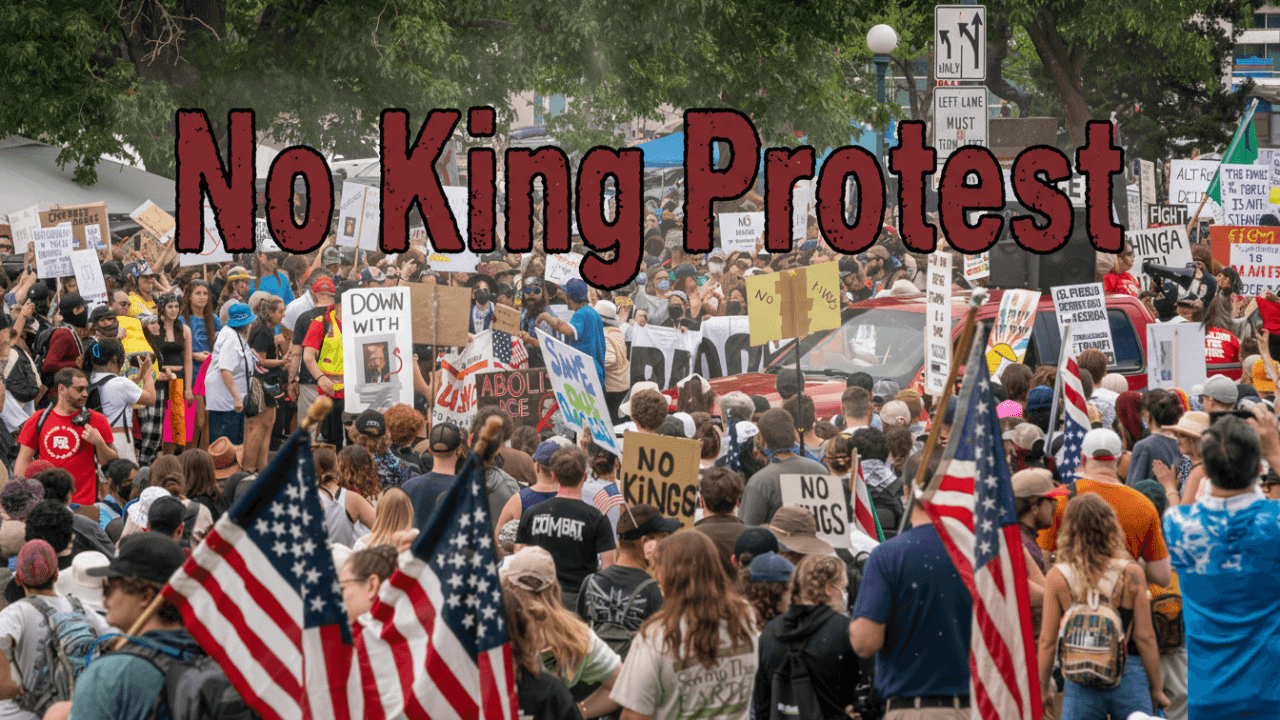When people start chanting “No Kings” across more than two thousand American cities, you know something big is stirring. The No Kings Protests 2025 have fast become one of the most talked-about civic movements of the year — uniting millions of Americans under one resounding message: no leader is above democracy.
From major metros like New York and Los Angeles to small towns in Kentucky and Iowa, citizens are turning up in droves, waving flags, carrying handmade signs, and saying what’s on everyone’s mind: “America doesn’t need a king — it needs accountability.”
Why “No Kings”? — The Meaning Behind the Movement
The phrase “No Kings” isn’t just catchy — it’s a deliberate echo of America’s founding ideals. Organizers behind the movement say it’s a direct response to what they describe as growing authoritarian tendencies in President Donald Trump’s administration.
They accuse the government of consolidating power, ignoring court rulings, deporting people in secrecy, and using militarized displays for political spectacle. In other words, they believe Trump is acting less like a president — and more like a monarch.
The movement’s tagline — “No crowns, no thrones, no kings” — captures that spirit perfectly. It’s not about hating the flag or the country; it’s about reclaiming them for everyone, equally.
Timeline of Events
To understand how the No Kings Protests 2025 reached their current momentum, here’s a quick look at how it all unfolded:
| Date | Event | Key Details |
|---|---|---|
| June 14, 2025 | First Wave of Protests | Coincided with Trump’s 79th birthday and the U.S. Army’s 250th anniversary parade. Estimated 5 million participants in 2,100+ cities nationwide. |
| June 15–20, 2025 | Aftermath & Coverage | Peaceful rallies dominated headlines; isolated incidents reported in Virginia and California. Trump dismissed the protests as “media theater.” |
| October 1–10, 2025 | Mobilization for Round Two | Organizers launched the “50-50-1” campaign — 50 states, 50 protests, one message — ramping up awareness through social media and local partnerships. |
| October 18, 2025 | Second Wave of Protests | Over 2,500 towns and cities across the U.S. held rallies. Expected turnout rivaled or surpassed June’s numbers. National Guard deployments were seen in states like Texas and Virginia. |
| October 19–Present | Awaiting Official Figures | As of now, organizers and media are still tallying turnout and outcomes from the second wave. Reports indicate peaceful demonstrations overall. |
What Happened So Far
The first No Kings Protests on June 14, 2025, were timed to make a statement — falling on Trump’s birthday, Flag Day, and a highly publicized military parade. For many, that day crystallized what they feared most: that the presidency was being reshaped into a personal spectacle.
Over 5 million Americans across all 50 states joined the protests, marking one of the largest coordinated demonstrations in recent U.S. history.
By the time October rolled around, momentum had only grown. The October 18 protests saw even greater turnout — over 2,500 events, with major gatherings in Philadelphia, Austin, Chicago, and Seattle. Local reports suggest that, despite a few tense standoffs, most events remained peaceful and family-friendly, emphasizing community and unity.
Public and Political Reactions
Reactions to the No Kings Protests 2025 have been predictably divided — and deeply emotional.
Supporters hail it as a patriotic stand for democracy. Teachers, veterans, healthcare workers, and even former Trump voters have joined in, saying they’re alarmed by the erosion of checks and balances. The movement’s grassroots nature — local organizers, volunteer-led marches, and decentralized funding — has drawn comparisons to historic civil rights protests.
Critics, however, have a different take. Republican leaders like Mike Johnson and Ted Cruz have dismissed the protests as “anti-American theater.” Cruz even floated using the RICO statute to investigate organizers, alleging “foreign-backed influence.”
Meanwhile, President Trump himself brushed off the demonstrations, telling reporters, “We’re not a monarchy — I know that better than anyone.”
Still, as images of massive crowds filled social media and evening news segments, one thing became clear: the protests struck a nerve — across party lines and generational divides alike.
Impact and What Lies Ahead
The immediate impact of the No Kings Protests 2025 might not be legislative — but it’s certainly cultural.
They’ve reshaped the national conversation about democracy, power, and protest. For many participants, this wasn’t just about one president; it was about preserving an idea — that democracy isn’t inherited, it’s maintained.
Experts note that large-scale movements like this often have ripple effects. They energize voter turnout, inspire local activism, and pressure institutions to uphold accountability. The challenge now is sustainability — keeping the energy alive beyond one protest day.
Organizers have hinted at a “Winter of Resolve” campaign — a series of town halls, legal aid drives, and civic education programs running through early 2026. Whether it catches fire or fizzles out depends largely on whether ordinary Americans stay engaged.
Final Thoughts
The No Kings Protests 2025 remind us that democracy’s strength lies in its people — not in any one leader, flag, or building.
From Philadelphia to Portland, Americans are once again reminding the world that freedom isn’t about obedience, it’s about participation. Whether history sees this as a defining moment or just another flashpoint will depend on what comes next — in the streets, in the courts, and at the ballot box.
For now, the chant still echoes across the country:
“No crowns. No thrones. No kings.”


